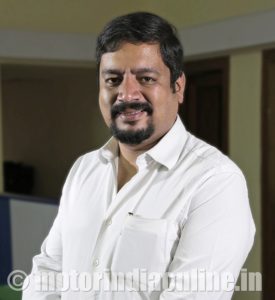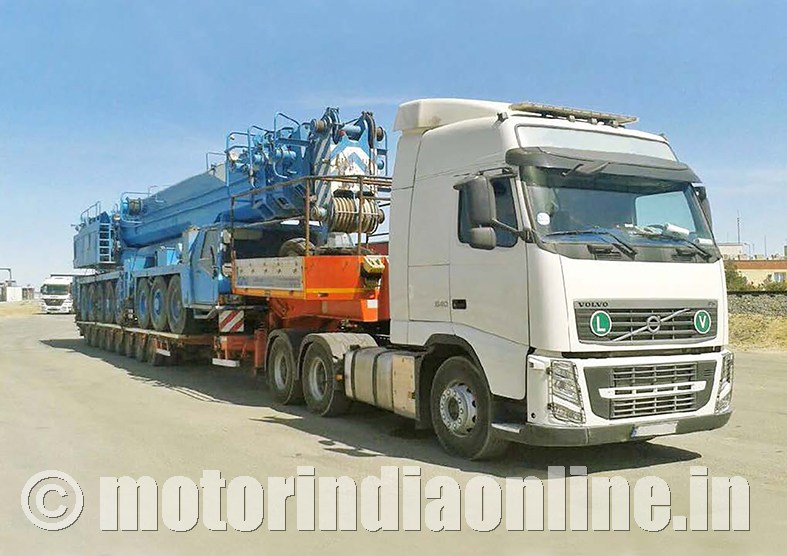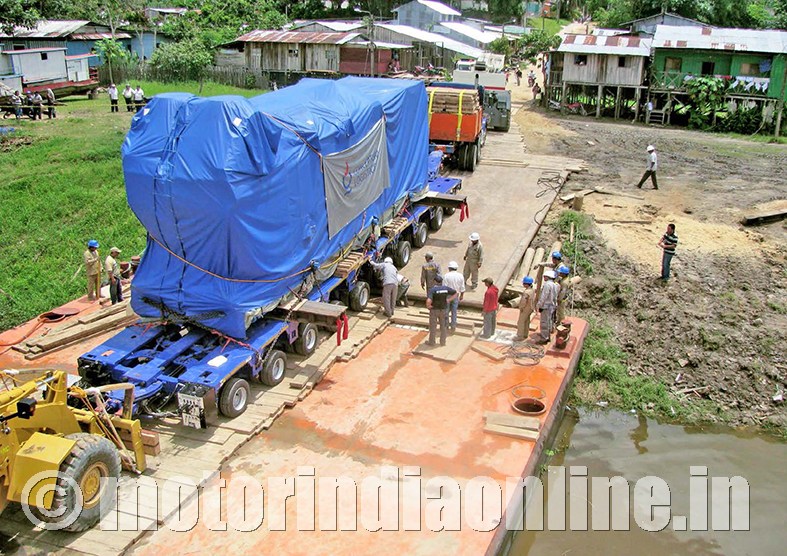Think of hauling ODCs – that which needs precise planning, think of shifting entire plants and machinery – that which needs meticulous planning, besides road transportation of cargo and even hand carriage cargo, think Conceptum Logistics.
Headquartered in the port city of Hamburg, Germany, Conceptum was born in 2002 and came to India six years later. Its footprints reach up to Australia and China, besides North and South Americas and Europe. Almost 35 per cent of its business comes from international project freight, 30 per cent normal cargo, 15 per cent from ODC ferrying and the rest covers up transporting cargo, whether within India or from here to abroad and back.

Though Conceptum is ‘fairly new’ in India lugging ODCs, it is catering to industries and helping them expand by shifting their plants and machinery.
Mr. Lloyd Nicholas Pires, Managing Director, Conceptum Logistics India, talks about the ODC market in India: “This space is a little bit more organized than the normal transportation business. It owes it to the kind of equipment that is used. If there were 4-5 players earlier, there are about 8-10 now. And the fact is that most of the equipment is owned by brokers, so even the big players go directly to them because it is more feasible that way.”
He says ODC space, though interesting, throws unique challenges: “One major project was to shift a press to Aurangabad where there were four ODC packages each weighing 265, 210, 184 and 105 tonnes. But en route, from Mumbai to Aurangabad, we had to tackle a 500 meter bridge for solely which we had to extend our 16-axle to 18-axle.”
He feels the job becomes more interesting because Conceptum believes in unloading ODCs by manual jacking which is a traditional method, though dying now. He shares: “We use wooden planks and basically pull the material out. There was one project where we had to dismantle a whole plant which included a 30 mt. box. We used cranes to bring it down and then used manual jacking to load it. Though it takes time, it is safer and there are a couple of experts in this traditional method of loading and unloading in India. You will be amazed to know that one such guy is 87 years old.”
Road blocks
Starting from infrastructural challenges, whether pertaining to roads, ports or seasonal reasons, cargo movement, be it ODCs or project cargo, obstacles are many. Project cargo is one of the major services that Conceptum offers to its clients. This is also one area where road blocks in infrastructure are glaringly obvious.
Mr. Pires quotes his experience: “One cannot pinpoint a time-frame with project logistics. It could keep us busy for one day, six months or even a couple of years. In a terrain like that in Nagaland or Tripura, huge shipments have a tough time moving. Once we had a shipment of 80 tonne apiece transformers going to Agartala which we could not move because there are no roads beyond Kolkata to bear that kind of load. So we had to rely on the barge service, and the barges operate only during monsoons. Then in a State like Odisha, people are unco-operative and demand money to allow the passage. To make matters easy, we do survey the route prior to the ODC or cargo movement. Also, the Central Government reduced the axle carrying capacity. They want to protect the roads. This means that loads above 100 tonnes need permission, which take a month to come through. Then, there is a change in the number of axles. If we have to carry 160 tonnes, we will require 10 axles, which earlier we could do with five or six. My costing depends on the number of axles. These axles and pullers are guzzlers. We don’t even get a kilometer per litre.”
Disappointing Indian ports
Another factor which disturbs heavy cargo movement is the status of Indian ports. Mr. Pires explains: “For project logistics we need better ports. The Mumbai port is dying. ODC movement is a huge problem there. Mundra port is good but is expensive since it’s private. But there are no facilities for drivers. Their owners don’t care about them. We rent out rooms for them if there is a delay. They forget that the driver has to be in a proper mindset if he has to move huge cargo like 260 tonnes.”
Comparing European ports to the Indian ones, he says: “European ports are better equipped than in India. Where there is a crane system, there is cleanliness, 24-hour service. There customs is easier, and even before the vessels arrive, people can already clear the cargo. As against the simplicity of system there, in India we have inspections, examinations, and much of everything depends on the customs officer. All this delays the process. In the end the client suffers even though the Government earns revenue.”
Still there have been improvements made in the last couple of years. Work, if not completely, has shifted online. Users like Conceptum hope that in the near future the entry process in full will be online.
Besides taking care of drivers, Conceptum travels with the cargo. Mr. Pires says: “Normally for any ODC there will be a driver, an operator and five or six people to lift the transmission lines overhead. But we prefer to send along a supervisor with the cargo. It is experience to handle these things more than anything else.”
With infrastructure development picking up in the North East, there is a surge in the number of players that lug heavy duty cargo. It is interesting to see that though the market is big there are not enough players to tap into it. Mr. Pires agrees: “Why just North East, look at Maharashtra, Gujarat. These two are major ODC hubs. If there are 50 ODC movers, we may have barely covered 40 per cent of the market.”
Conceptum is clear that any cargo is the same for them – be it small hand carriage package or an ODC. He clarifies though that, “Globally we concentrate only on ODC. But if the client asks, we do not say no, but we prefer projects. For our customers, we handle LCL, garments, accessories, besides normal containers and then air freight also.” He also shares that there is a huge movement of used-equipment like diggers and the like from here to South-East Asian countries like Indonesia, Vietnam where development is on the rise. Conceptum takes pride in the fact that they can offer door-to-door movement with everything in between.
Market trend
With cement and steel industries looking up, Conceptum is quite clear as to where their big business lies. He shares: “Many cement companies are either getting into new plants or remodeling their old ones. Then forging may also be on the rise. With steel now picking up, we are looking at it.”
Whether it is ODC, project logistics or hand carriage, if a logistics company treats it like the onus is on them, then you know that it is none other than Conceptum Logistics India.

